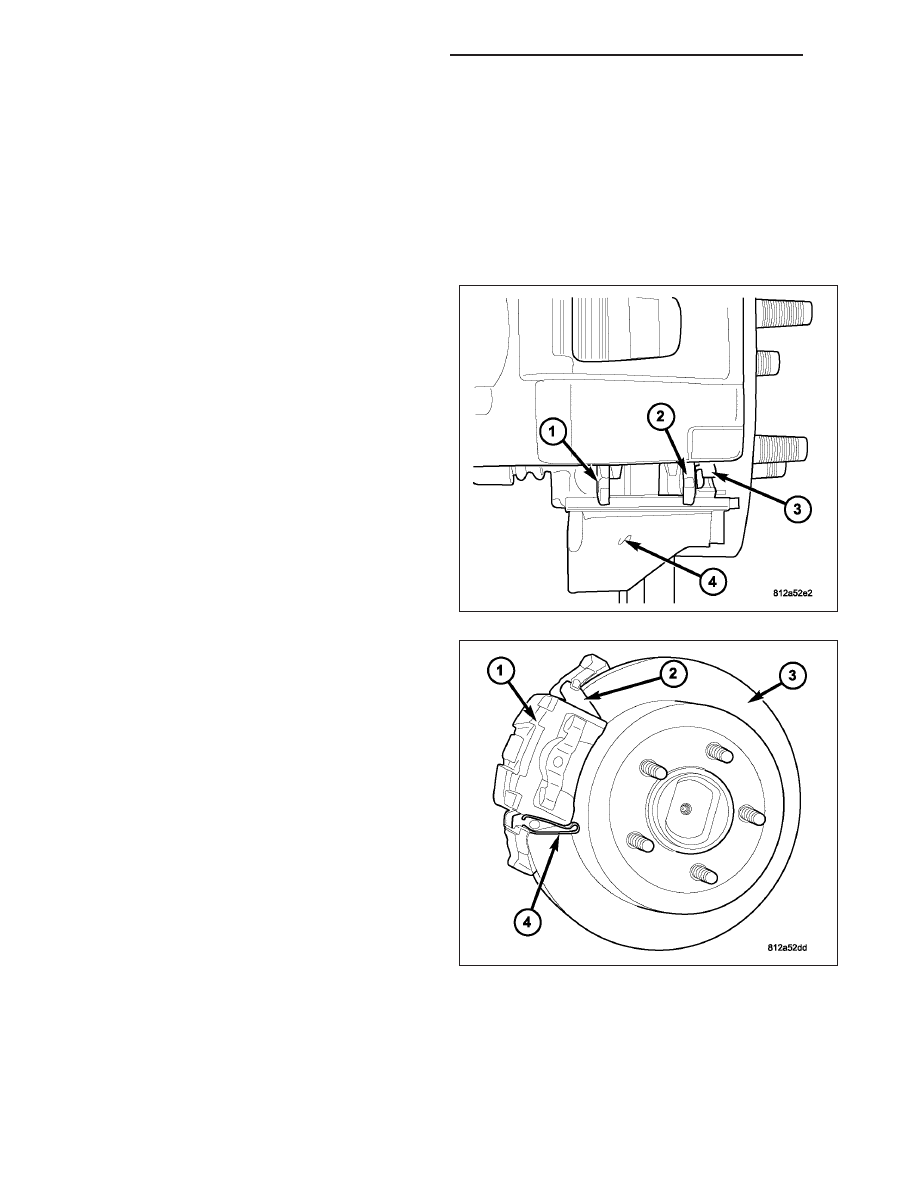Jeep Liberty KJ. Manual - part 564

INSTALLATION
FRONT
1. Install the inboard and outboard pads.
2. Install the caliper (Refer to 5 - BRAKES/HYDRAULIC/MECHANICAL/DISC BRAKE CALIPERS - INSTALLA-
TION).
3. Install the tire and wheel assembly. (Refer to 22 - TIRES/WHEELS/WHEELS - STANDARD PROCEDURE).
REAR
1. Place an old brake shoe between a C-clamp and
caliper piston. Bottom piston in the caliper bore
with C-clamp.
2. Clean caliper mounting adapter (4) and anti-rattle
spring guide (3).
3. Lubricate anti-rattle spring guides (3) with Mopar
brake grease.
4. Install anti-rattle spring guides (3).
NOTE: Anti-rattle spring guides (3) are not inter-
changeable.
5. Install inboard brake pad (1) to the caliper.
6. Install outboard brake pad (2) to the caliper.
7. Tilt the top of the caliper over rotor and under
adapter. Then push the bottom of the caliper down
onto the adapter (4).
8. Install caliper (1) to the rotor and then install the
caliper slide pin bolts, (Refer to 5 - BRAKES/HY-
DRAULIC/MECHANICAL/DISC BRAKE CALIPERS
- INSTALLATION).
9. Install wheel and tire assemblies and lower vehicle,
(Refer to 22 - TIRES/WHEELS/WHEELS - STAN-
DARD PROCEDURE).
10. Apply brakes several times to seat caliper pistons
and brake shoes and obtain firm pedal.
11. Top off master cylinder fluid level.
5 - 16
BRAKES - BASE - SERVICE INFORMATION
KJ